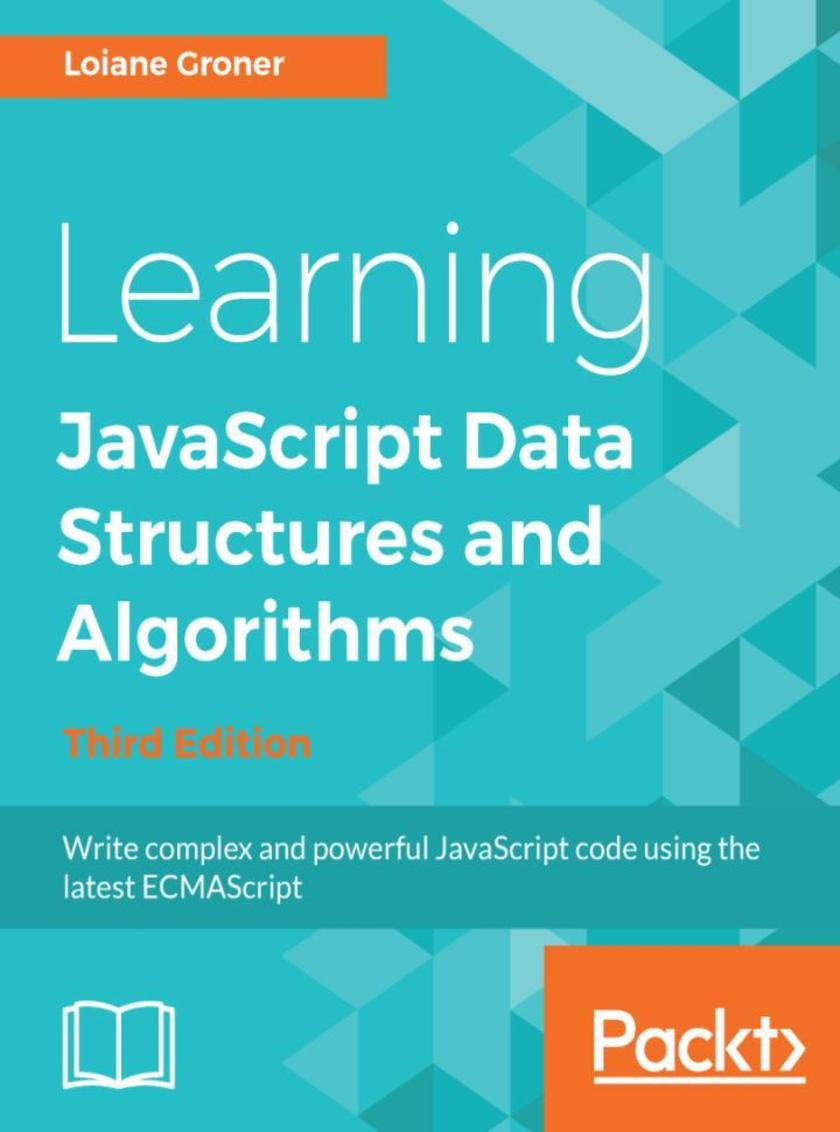
Learning JavaScript Data Structures and Algorithms
¥81.74
Create classic data structures and algorithms such as depth-first search and breadth-first search, learn recursion, as well as create and use a heap data structure using JavaScript About This Book ? Implement common data structures and the associated algorithms along with the context in which they are used ? Master existing JavaScript data structures such as arrays, sets, and maps, and learn how to implement new ones such as stacks, linked lists, trees, and graphs in ES 8 ? Develop abstract data types to make JavaScript a more flexible and powerful programming language Who This Book Is For If you’re a JavaScript developer who wants to dive deep into JavaScript and write complex programs using JavaScript data structures and algorithms, this book is for you. What You Will Learn ? Declare, initialize, add, and remove items from arrays, stacks, and queues ? Create and use linked lists, doubly linked lists, and circular linked lists ? Store unique elements with hash tables, dictionaries, and sets ? Explore the use of binary trees and binary search trees ? Sort data structures using algorithms such as bubble sort, selection sort, insertion sort, merge sort, and quick sort ? Search elements in data structures using sequential sort and binary search In Detail A data structure is a particular way of organizing data in a computer to utilize resources efficiently. Data structures and algorithms are the base of every solution to any programming problem. With this book, you will learn to write complex and powerful code using the latest ES 2017 features. Learning JavaScript Data Structures and Algorithms begins by covering the basics of JavaScript and introduces you to ECMAScript 2017, before gradually moving on to the most important data structures such as arrays, queues, stacks, and linked lists. You will gain in-depth knowledge of how hash tables and set data structures function as well as how trees and hash maps can be used to search files in an HD or represent a database. This book serves as a route to take you deeper into JavaScript. You’ll also get a greater understanding of why and how graphs, one of the most complex data structures, are largely used in GPS navigation systems in social networks. Toward the end of the book, you’ll discover how all the theories presented in this book can be applied to solve real-world problems while working on your own computer networks and Facebook searches. Style and approach Easy to follow guide which will cover the most used data structures and sorting/searching algorithms known in the computer science world along with examples to help the readers understand each chapter thoroughly.
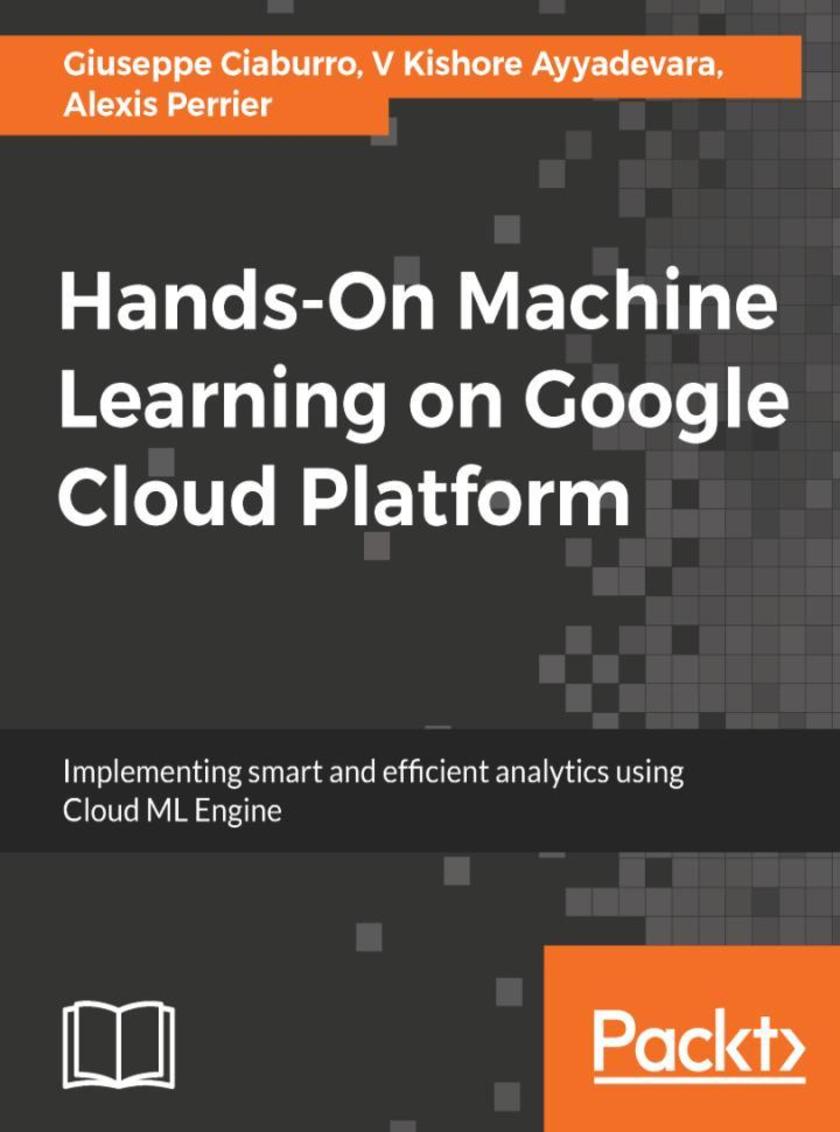
Hands-On Machine Learning on Google Cloud Platform
¥81.74
Unleash Google's Cloud Platform to build, train and optimize machine learning models About This Book ? Get well versed in GCP pre-existing services to build your own smart models ? A comprehensive guide covering aspects from data processing, analyzing to building and training ML models ? A practical approach to produce your trained ML models and port them to your mobile for easy access Who This Book Is For This book is for data scientists, machine learning developers and AI developers who want to learn Google Cloud Platform services to build machine learning applications. Since the interaction with the Google ML platform is mostly done via the command line, the reader is supposed to have some familiarity with the bash shell and Python scripting. Some understanding of machine learning and data science concepts will be handy What You Will Learn ? Use Google Cloud Platform to build data-based applications for dashboards, web, and mobile ? Create, train and optimize deep learning models for various data science problems on big data ? Learn how to leverage BigQuery to explore big datasets ? Use Google’s pre-trained TensorFlow models for NLP, image, video and much more ? Create models and architectures for Time series, Reinforcement Learning, and generative models ? Create, evaluate, and optimize TensorFlow and Keras models for a wide range of applications In Detail Google Cloud Machine Learning Engine combines the services of Google Cloud Platform with the power and flexibility of TensorFlow. With this book, you will not only learn to build and train different complexities of machine learning models at scale but also host them in the cloud to make predictions. This book is focused on making the most of the Google Machine Learning Platform for large datasets and complex problems. You will learn from scratch how to create powerful machine learning based applications for a wide variety of problems by leveraging different data services from the Google Cloud Platform. Applications include NLP, Speech to text, Reinforcement learning, Time series, recommender systems, image classification, video content inference and many other. We will implement a wide variety of deep learning use cases and also make extensive use of data related services comprising the Google Cloud Platform ecosystem such as Firebase, Storage APIs, Datalab and so forth. This will enable you to integrate Machine Learning and data processing features into your web and mobile applications. By the end of this book, you will know the main difficulties that you may encounter and get appropriate strategies to overcome these difficulties and build efficient systems. Style and approach An easy-to-follow step by step guide which will help you get to the grips with real-world applications of Google Cloud Machine Learning.
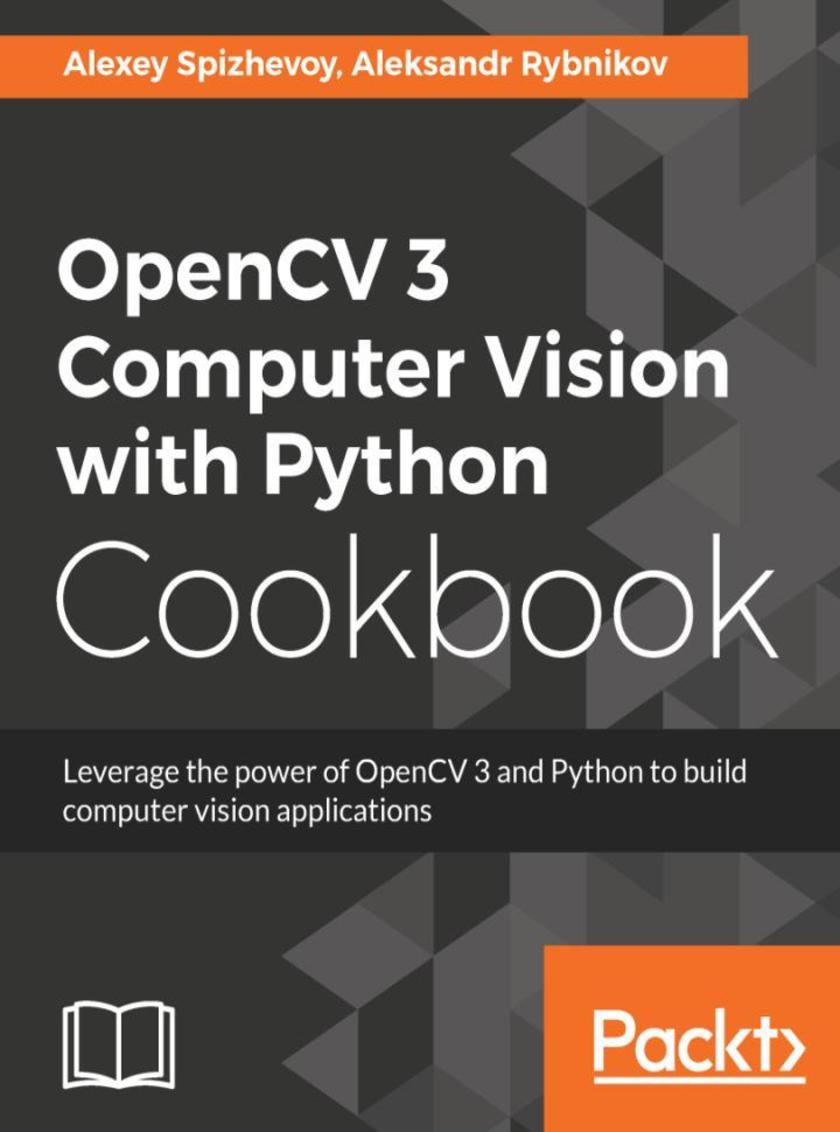
OpenCV 3 Computer Vision with Python Cookbook
¥81.74
Recipe-based approach to tackle the most common problems in Computer Vision by leveraging the functionality of OpenCV using Python APIs About This Book ? Build computer vision applications with OpenCV functionality via Python API ? Get to grips with image processing, multiple view geometry, and machine learning ? Learn to use deep learning models for image classification, object detection, and face recognition Who This Book Is For This book is for developers who have a basic knowledge of Python. If you are aware of the basics of OpenCV and are ready to build computer vision systems that are smarter, faster, more complex, and more practical than the competition, then this book is for you. What You Will Learn ? Get familiar with low-level image processing methods ? See the common linear algebra tools needed in computer vision ? Work with different camera models and epipolar geometry ? Find out how to detect interesting points in images and compare them ? Binarize images and mask out regions of interest ? Detect objects and track them in videos In Detail OpenCV 3 is a native cross-platform library for computer vision, machine learning, and image processing. OpenCV's convenient high-level APIs hide very powerful internals designed for computational efficiency that can take advantage of multicore and GPU processing. This book will help you tackle increasingly challenging computer vision problems by providing a number of recipes that you can use to improve your applications. In this book, you will learn how to process an image by manipulating pixels and analyze an image using histograms. Then, we'll show you how to apply image filters to enhance image content and exploit the image geometry in order to relay different views of a pictured scene. We’ll explore techniques to achieve camera calibration and perform a multiple-view analysis. Later, you’ll work on reconstructing a 3D scene from images, converting low-level pixel information to high-level concepts for applications such as object detection and recognition. You’ll also discover how to process video from files or cameras and how to detect and track moving objects. Finally, you'll get acquainted with recent approaches in deep learning and neural networks. By the end of the book, you’ll be able to apply your skills in OpenCV to create computer vision applications in various domains. Style and approach This book helps you learn the core concepts of OpenCV faster by taking a recipe-based approach where you can try out different code snippets to understand a concept.
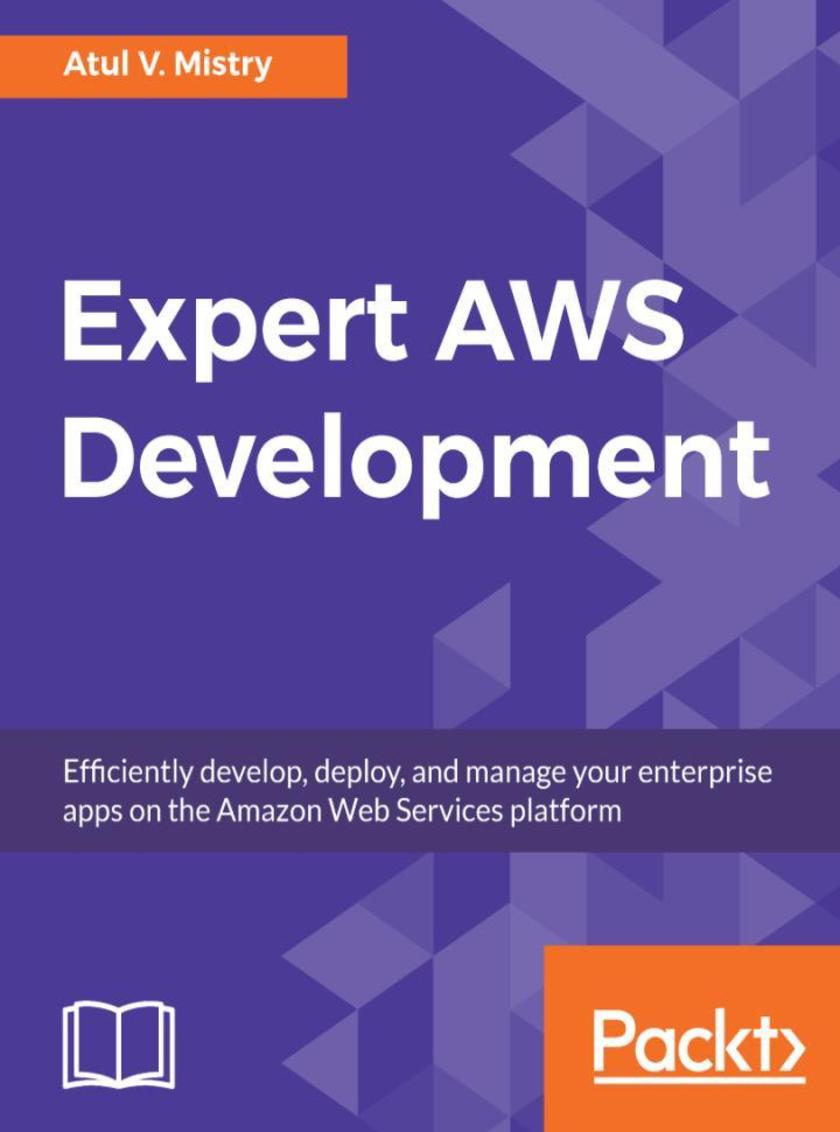
Expert AWS Development
¥81.74
Key concepts, sample applications, best practices, and troubleshooting tips to build highly scalable applications in AWS. About This Book ? Design highly available, cost efficient, fault tolerant, and scalable distributed systems ? A practical guide that will help you build, deploy, and manage applications with ease. ? Develop effective solutions with AWS SDK and Lambda Who This Book Is For This book targets developers who would like to build and manage web and mobile applications and services on the AWS platform. If you are an architect you will be able to take a deep dive and use examples that can be readily applied to real world scenarios. Some prior programming experience is assumed along with familiarity of cloud computing. What You Will Learn ? Learn how to get up and running with AWS Developer Tools. ? Integrate the four major phases in the Release Processes. Source, Build, Test and Production. ? Learn how to integrate Continuous Integration, Continuous Delivery, and Continuous Deployment in AWS. ? Make secure, scalable and fault tolerant applications. ? Understand different architectures and deploy complex architectures within minutes In Detail Continuous deployment and Agile methodology have enabled huge advances in modern applications. This book will enable the reader to make use of this rapidly evolving technology to build highly scalable applications within AWS using different architectures. You will begin with installation of AWS SDK and you will get hands-on experience on creating an application using AWS Management Console and AWS Command Line Interface (CLI). Next you will be integrating Applications with AWS services such as DynamoDB, Amazon Kinesis, AWS Lambda, Amazon SQS and Amazon SWF Following this you will get well versed with CI/CD workflow and work with four major phases in Release processes – Source, Build, Test and Production. Next you will learn to apply AWS developer tools in your Continuous Integration (CI) and Continuous Deployment (CD) WorkFlow. Later you will learn about User Authentication using Amazon Cognito and also how you can evaluate the best architecture as per your infrastructure costs. You will learn about Amazon EC2 service and deploy an app using Amazon EC2.You will also get well versed with container service which is Amazon EC2 Container Service (Amazon ECS) and you will learn to deploy an app using Amazon ECS. Along with EC2 and ECS, you will also deploying a practical real-world example of a CI/CD application with the Serverless Application Framework which is known as AWS Lambda. Finally you will learn how to build, develop and deploy the Application using AWS Developer tools like AWS CodeCommit, AWS CodeBuild, AWS CodeDeploy and AWS CodePipeline as per project needs. Also you can develop and deploy applications within minutes using AWS CodeStar from wizard. By the end of this book, the reader will effectively build, deploy, and manage applications on AWS along with scaling and securing applications with best practices and troubleshooting tips. Style and approach This book covers follows an approach where you will learn the key concepts followed by a real world example and some tips and tricks to make building and deploying easier
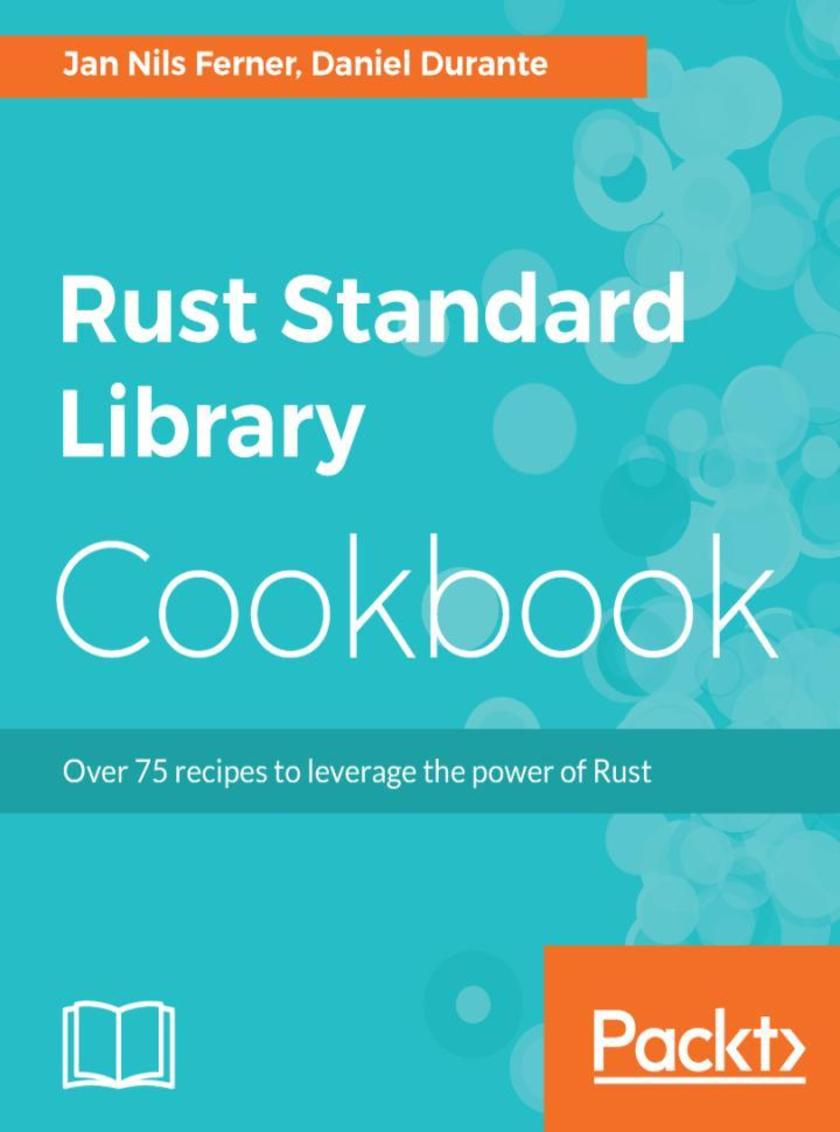
Rust Standard Library Cookbook
¥81.74
Explore the Rust Standard library and compose algorithms with minimal dependency on external libraries About This Book ? Develop high-quality, fast, and portable applications by leveraging the power of Rust's Standard library. ? Practical recipes that will help you work with the Standard library to boost your productivity as a Rust developer. ? Learn about most relevant external crates to be used along with the Standard library. Who This Book Is For This book is for developers who would like to explore the power of Rust and learn to use the STL for various functionalities. A basic Rust programming knowledge is assumed. What You Will Learn ? How to use the basic modules of the library: strings, command line access, and more. ? Implement collections and folding of collections using vectors, Deque, linked lists, and more. ? Handle various file types , compressing and decompressing data. ? Search for files with glob patterns. ? Implement parsing through various formats such as CSV, TOML, and JSON. ? Utilize drop trait , the Rust version of destructor. ? Resource locking with Bilocks. In Detail Mozilla’s Rust is gaining much attention with amazing features and a powerful library. This book will take you through varied recipes to teach you how to leverage the Standard library to implement efficient solutions. The book begins with a brief look at the basic modules of the Standard library and collections. From here, the recipes will cover packages that support file/directory handling and interaction through parsing. You will learn about packages related to advanced data structures, error handling, and networking. You will also learn to work with futures and experimental nightly features. The book also covers the most relevant external crates in Rust. By the end of the book, you will be proficient at using the Rust Standard library. Style and approach This recipe-based practical guide presents each topic with step-by-step instructions on how you can create fast and efficient applications utilizing Rust's Standard library packages.
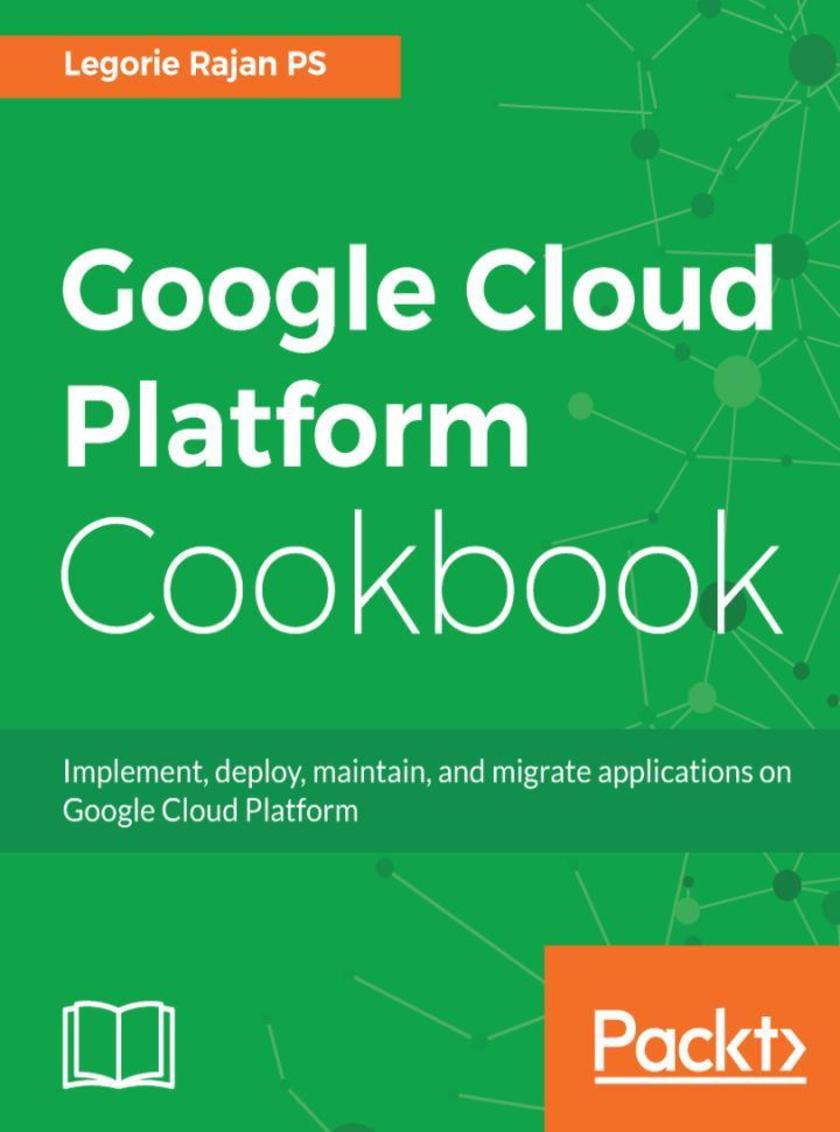
Google Cloud Platform Cookbook
¥81.74
Practical recipes to implement cost-effective and scalable cloud solutions for your organization About This Book ? Implement Google Cloud services in your organization ? Leverage Google Cloud components to secure your organization’s data ? A recipe-based guide that promises hands-on experience in deploying a highly scalable and available environment Who This Book Is For This book is for IT professionals, engineers, and developers looking at implementing Google Cloud in their organizations. Administrators and architects planning to make their organization more efficient with Google Cloud will also find this book useful. Basic understanding of Cloud services and the Google Cloud platform is necessary. What You Will Learn ? Host a Python application on Google Compute Engine ? Host an application using Google Cloud Functions ? Migrate a MySQL DB to Cloud Spanner ? Configure a network for a highly available application on GCP ? Learn simple image processing using Storage and Cloud Functions ? Automate security checks using Policy Scanner ? Understand tools for monitoring a production environment in GCP ? Learn to manage multiple projects using service accounts In Detail Google Cloud Platform is a cloud computing platform that offers products and services to host applications using state-of-the art infrastructure and technology. You can build and host applications and websites, store data, and analyze data on Google's scalable infrastructure. This book follows a recipe-based approach, giving you hands-on experience to make the most of Google Cloud services. This book starts with practical recipes that explain how to utilize Google Cloud's common services. Then, you'll see how to make full use of Google Cloud components such as networking, security, management, and developer tools. Next, we'll deep dive into implementing core Google Cloud services into your organization, with practical recipes on App Engine, Compute Engine microservices with Cloud Functions, virtual networks, and Cloud Storage. Later, we'll provide recipes on implementing authentication and security, Cloud APIs, command-line management, deployment management, and the Cloud SDK. Finally, we'll cover administration troubleshooting tasks with the Compute and Container Engines and we'll show how to monitor your organization's efficiency with best practices. By the end of this book, you'll have a complete understanding of how to implement Google Cloud services in your organization with ease. Style and approach This book will quickly get you started with using Google Cloud Services.
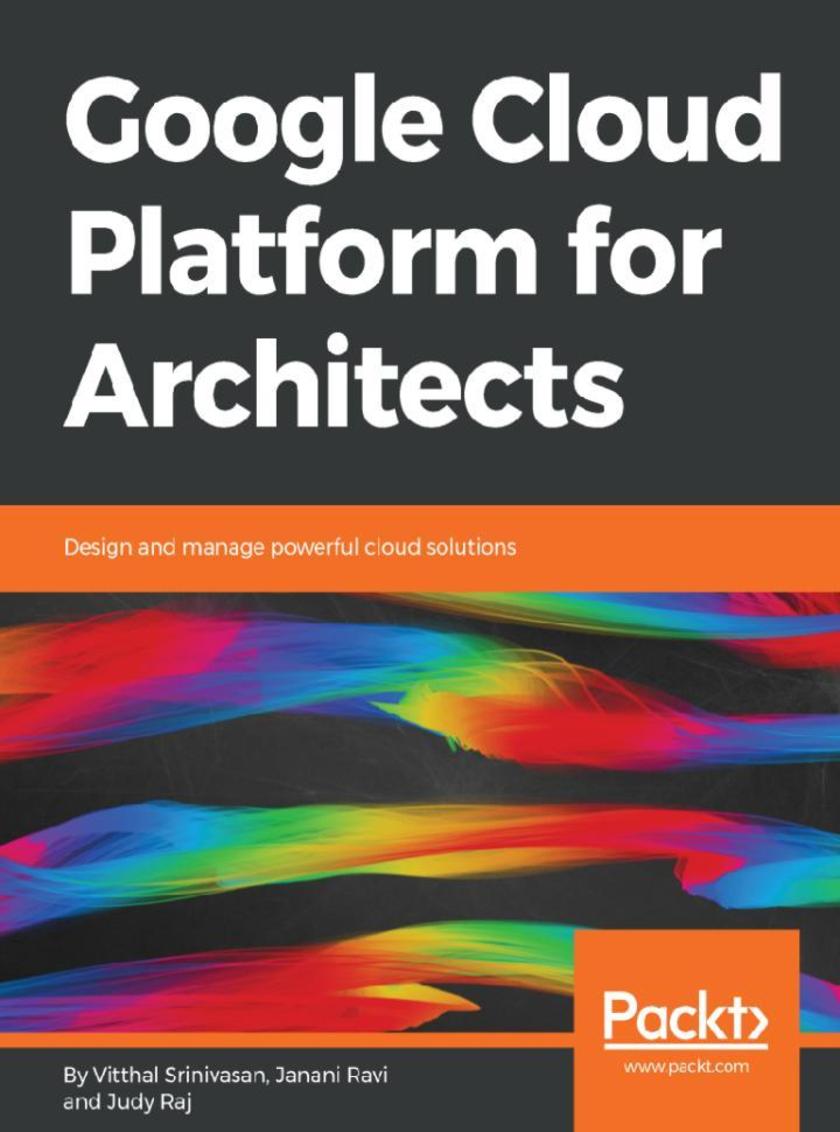
Google Cloud Platform for Architects
¥81.74
Get acquainted with GCP and manage robust, highly available, and dynamic solutions to drive business objective About This Book ? Identify the strengths, weaknesses and ideal use-cases for individual services offered on the Google Cloud Platform ? Make intelligent choices about which cloud technology works best for your use-case ? Leverage Google Cloud Platform to analyze and optimize technical and business processes Who This Book Is For If you are a Cloud architect who is responsible to design and manage robust cloud solutions with Google Cloud Platform, then this book is for you. System engineers and Enterprise architects will also find this book useful. A basic understanding of distributed applications would be helpful, although not strictly necessary. Some working experience on other public cloud platforms would help too. What You Will Learn ? Set up GCP account and utilize GCP services using the cloud shell, web console, and client APIs ? Harness the power of App Engine, Compute Engine, Containers on the Kubernetes Engine, and Cloud Functions ? Pick the right managed service for your data needs, choosing intelligently between Datastore, BigTable, and BigQuery ? Migrate existing Hadoop, Spark, and Pig workloads with minimal disruption to your existing data infrastructure, by using Dataproc intelligently ? Derive insights about the health, performance, and availability of cloud-powered applications with the help of monitoring, logging, and diagnostic tools in Stackdriver In Detail Using a public cloud platform was considered risky a decade ago, and unconventional even just a few years ago. Today, however, use of the public cloud is completely mainstream - the norm, rather than the exception. Several leading technology firms, including Google, have built sophisticated cloud platforms, and are locked in a fierce competition for market share. The main goal of this book is to enable you to get the best out of the GCP, and to use it with confidence and competence. You will learn why cloud architectures take the forms that they do, and this will help you become a skilled high-level cloud architect. You will also learn how individual cloud services are configured and used, so that you are never intimidated at having to build it yourself. You will also learn the right way and the right situation in which to use the important GCP services. By the end of this book, you will be able to make the most out of Google Cloud Platform design. Style and approach A clear, concise, and straightforward book which will enable to develop and manage optimum solutions for your infrastructure
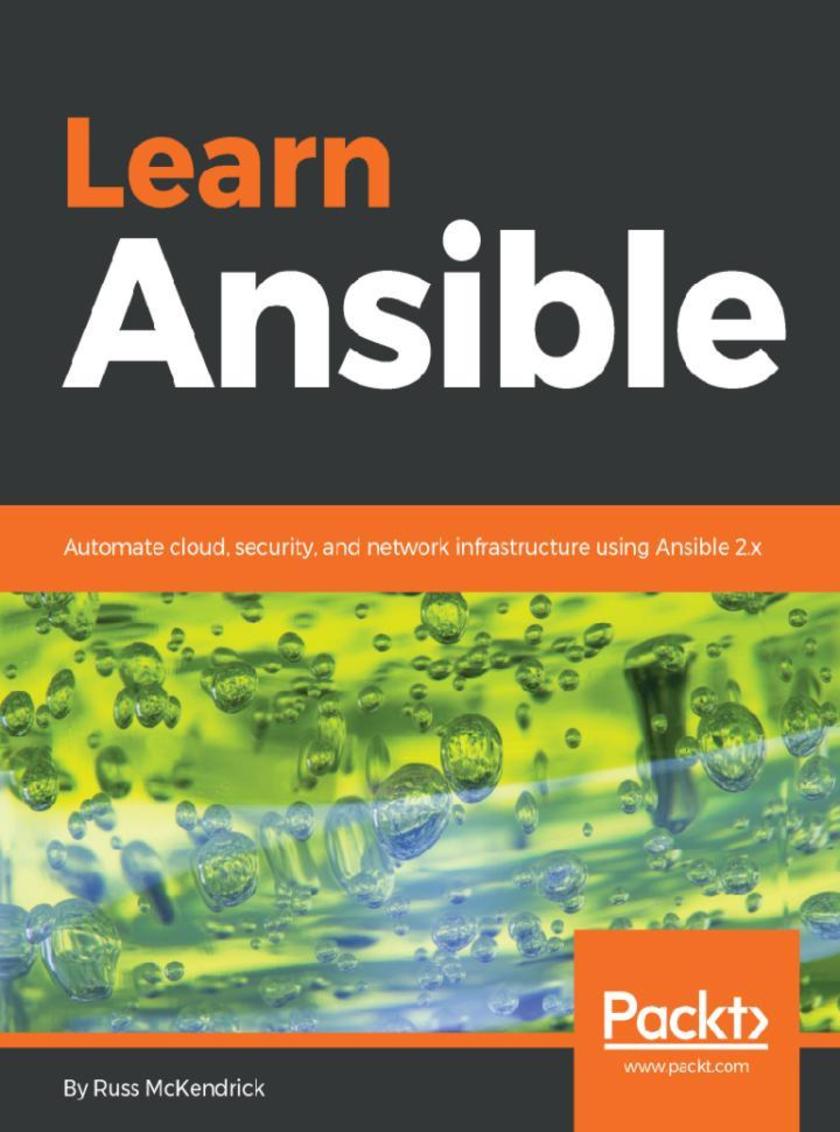
Learn Ansible
¥81.74
Run Ansible playbooks to launch complex multi-tier applications hosted in public clouds About This Book ? Build your learning curve using Ansible ? Automate cloud, network, and security infrastructures with ease ? Gain hands-on exposure on Ansible Who This Book Is For Learn Ansible is perfect for system administrators and developers who want to take their current workflows and transform them into repeatable playbooks using Ansible. No prior knowledge of Ansible is required. What You Will Learn ? Write your own playbooks to configure servers running CentOS, Ubuntu, and Windows ? Identify repeatable tasks and write playbooks to automate them ? Define a highly available public cloud infrastructure in code, making it easy to distribute your infrastructure configuration ? Deploy and configure Ansible Tower and Ansible AWX ? Learn to use community contributed roles ? Use Ansible in your day-to-day role and projects In Detail Ansible has grown from a small, open source orchestration tool to a full-blown orchestration and configuration management tool owned by Red Hat. Its powerful core modules cover a wide range of infrastructures, including on-premises systems and public clouds, operating systems, devices, and services—meaning it can be used to manage pretty much your entire end-to-end environment. Trends and surveys say that Ansible is the first choice of tool among system administrators as it is so easy to use. This end-to-end, practical guide will take you on a learning curve from beginner to pro. You'll start by installing and configuring the Ansible to perform various automation tasks. Then, we'll dive deep into the various facets of infrastructure, such as cloud, compute and network infrastructure along with security. By the end of this book, you'll have an end-to-end understanding of Ansible and how you can apply it to your own environments. Style and approach A hands-on approach to give you practical experience of writing playbooks and roles and executing them. At the end of each chapter, you’ll find test questions to test your knowledge on Ansible.
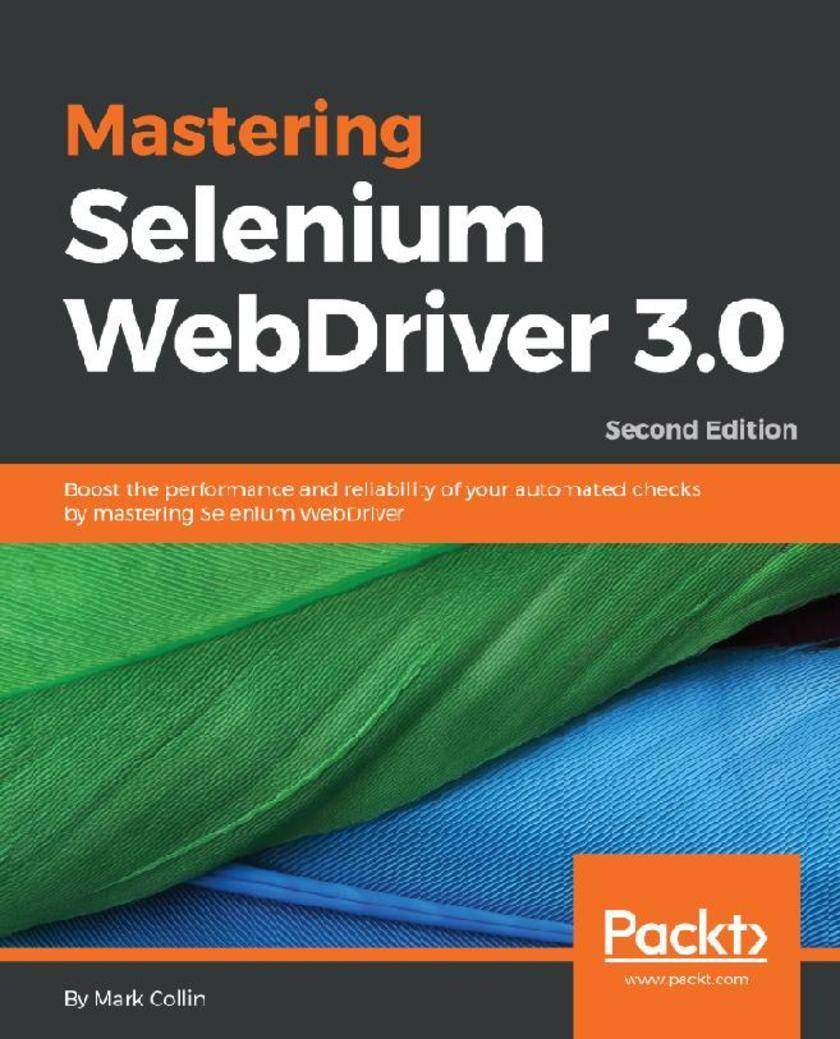
Mastering Selenium WebDriver 3.0
¥81.74
Complement Selenium with useful additions that fit seamlessly into the rich and well-crafted API that Selenium offers About This Book ? Understand the power, simplicity, and limitations of the core Selenium framework ? Write clear, readable, and reliable tests that perform complex test automation tasks ? Work with ChromeDriver and GeckoDriver in headless mode Who This Book Is For If you are a software tester or a developer with working experience in Selenium and competency with Java, who is interested in automation and are looking forward to taking the next step in their learning journey, then this is the book for you. What You Will Learn ? Provide fast, useful feedback with screenshots ? Create extensible, well-composed page objects ? Utilize ChromeDriver and GeckoDriver in headless mode ? Leverage the full power of Advanced User Interactions APIs ? Use JavascriptExecutor to execute JavaScript snippets in the browser through Selenium ? Build user interaction into your test script using JavascriptExecutor ? Learn the basics of working with Appium In Detail The second edition of Mastering Selenium 3.0 WebDriver starts by showing you how to build your own Selenium framework with Maven. You'll then look at how you can solve the difficult problems that you will undoubtedly come across as you start using Selenium in an enterprise environment and learn how to produce the right feedback when failing. Next, you’ll explore common exceptions that you will come across as you use Selenium, the root causes of these exceptions, and how to fix them. Along the way, you’ll use Advanced User Interactions APIs, running any JavaScript you need through Selenium; and learn how to quickly spin up a Selenium Grid using Docker containers. In the concluding chapters, you‘ll work through a series of scenarios that demonstrate how to extend Selenium to work with external libraries and applications so that you can be sure you are using the right tool for the job. Style and approach This book is a pragmatic guide that takes you through the process of creating a test framework with Selenium 3. It then shows you how you can extend this framework to overcome common obstacles that you will come across whilst using Selenium.
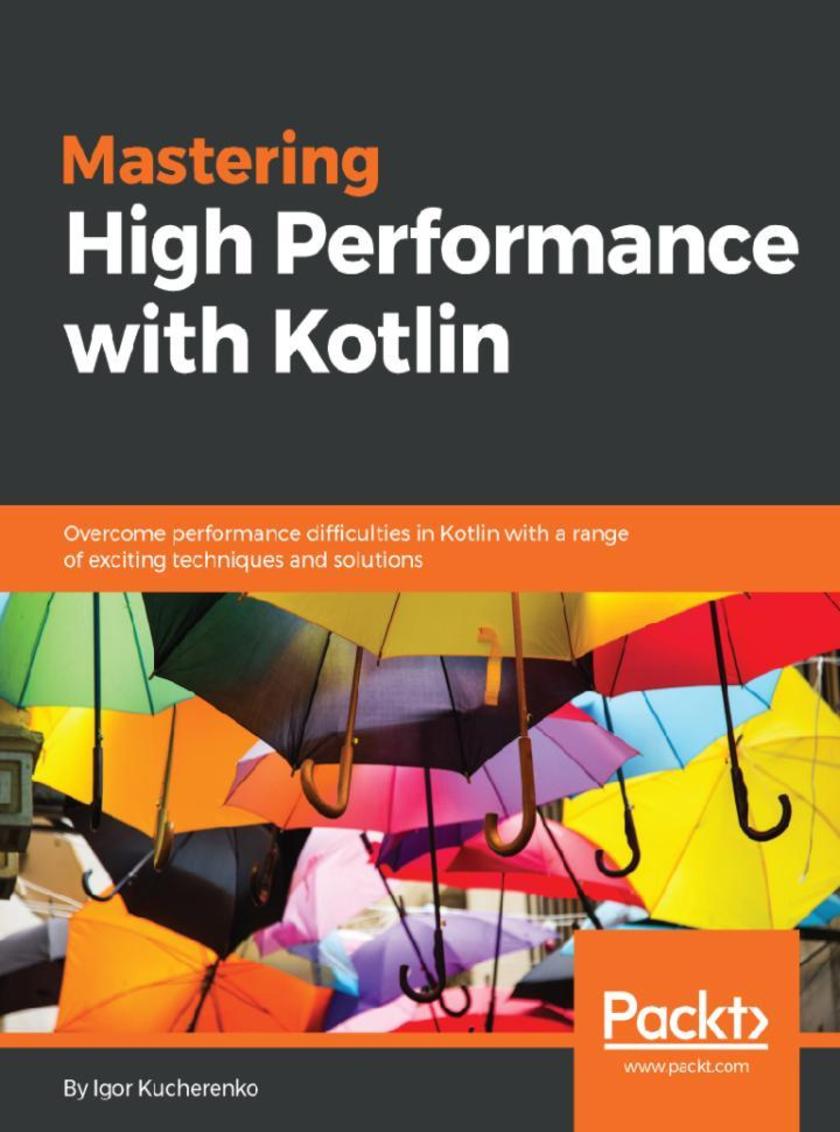
Mastering High Performance with Kotlin
¥81.74
Find out how to write Kotlin code without overhead and how to use different profiling tools and bytecode viewer to inspect expressions of Kotlin language. About This Book ? Apply modern Kotlin features to speed up processing and implement highly efficient and reliable codes. ? Learn memory optimization, concurrency, multi-threading, scaling, and caching techniques to achieve high performance. ? Learn how to prevent unnecessary overhead and use profiling tools to detect performance issues. Who This Book Is For This book is for Kotlin developers who would like to build reliable and high-performance applications. Prior Kotlin programming knowledge is assumed. What You Will Learn ? Understand the importance of high performance ? Learn performance metrics ? Learn popular design patterns currently being used in Kotlin ? Understand how to apply modern Kotlin features to data processing ? Learn how to use profling tools ? Discover how to read bytecode ? Learn to perform memory optimizations ? Uncover approaches to the multithreading environment In Detail The ease with which we write applications has been increasing, but with it comes the need to address their performance. A balancing act between easily implementing complex applications and keeping their performance optimal is a present-day requirement In this book, we explore how to achieve this crucial balance, while developing and deploying applications with Kotlin. The book starts by analyzing various Kotlin specifcations to identify those that have a potentially adverse effect on performance. Then, we move on to monitor techniques that enable us to identify performance bottlenecks and optimize performance metrics. Next, we look at techniques that help to us achieve high performance: memory optimization, concurrency, multi threading, scaling, and caching. We also look at fault tolerance solutions and the importance of logging. We'll also cover best practices of Kotlin programming that will help you to improve the quality of your code base. By the end of the book, you will have gained some insight into various techniques and solutions that will help to create high-performance applications in the Kotlin environment Style and approach This book guides you through how to use profiling tools to detect performance issues and build high-performance applications in the Kotlin environment.
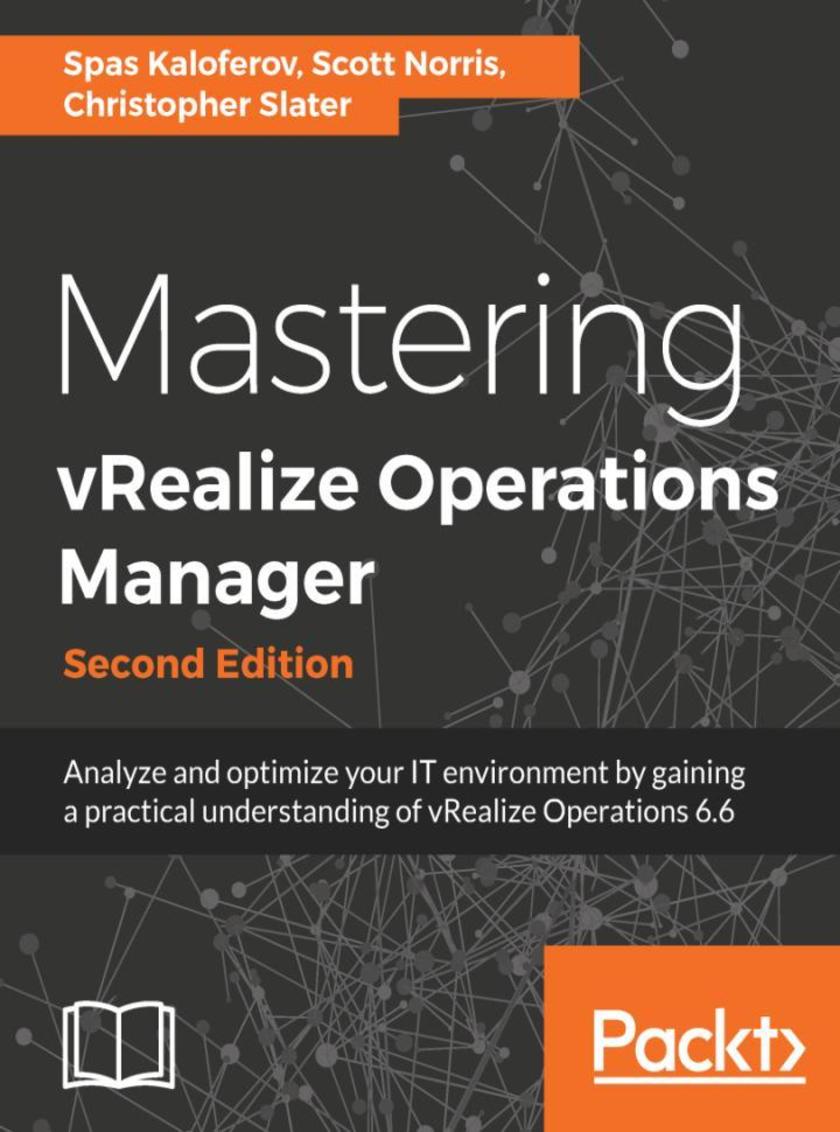
Mastering vRealize Operations Manager - Second Edition
¥81.74
Manage vRealize operations manager 6.6 effectively using this comprehensive guide. About This Book ? Get complete control of capacity management in your virtual environment ? Display the most appropriate performance metrics and assemble your own dashboard ? Analyze and process data from different sources into a single repository ? Optimize vRealize Automation workload placement Who This Book Is For If you are an administrator of a virtual environment and have used vRealize Operations before but want to gain a professional understanding by easily implementing complex tasks with it, then this book is for you. What You Will Learn ? Discover advanced vRealize Operations concepts and design your processes effectively for the underlying architecture ? Plan and install a new version or upgrade from a previous one ? Apply proven capacity management theories and techniques in practical, real-world environments ? Manipulate data and metrics to display them in the most effective way possible ? Create custom views and dashboards fit for any use case ? Explore how policies have evolved in vRealize Operations 6.6 and how to apply them in the most effective manner In Detail In the modern IT world, the criticality of managing the health, efficiency, and compliance of virtualized environments is more important than ever. With vRealize Operations Manager 6.6, you can make a difference to your business by being reactive rather than proactive. Mastering vRealize Operations Manager helps you streamline your processes and customize the environment to suit your needs. You will gain visibility across all devices in the network and retain full control. With easy-to-follow, step-by-step instructions and support images, you will quickly master the ability to manipulate your data and display it in a way that best suits you and your business or technical requirements. This book not only covers designing, installing, and upgrading vRealize Operations 6.6, but also gives you a deep understanding of its building blocks: badges, alerts, super metrics, views, dashboards, management packs, and plugins. With the new vRealize Operations 6.6 troubleshooting capabilities, capacity planning, intelligent workload placement, and additional monitoring capabilities, this book is aimed at ensuring you get the knowledge to manage your virtualized environment as effectively as possible. Style and approach A step-by-step practical approach guide that help you learn new features of vRealize operations manager 6.6.
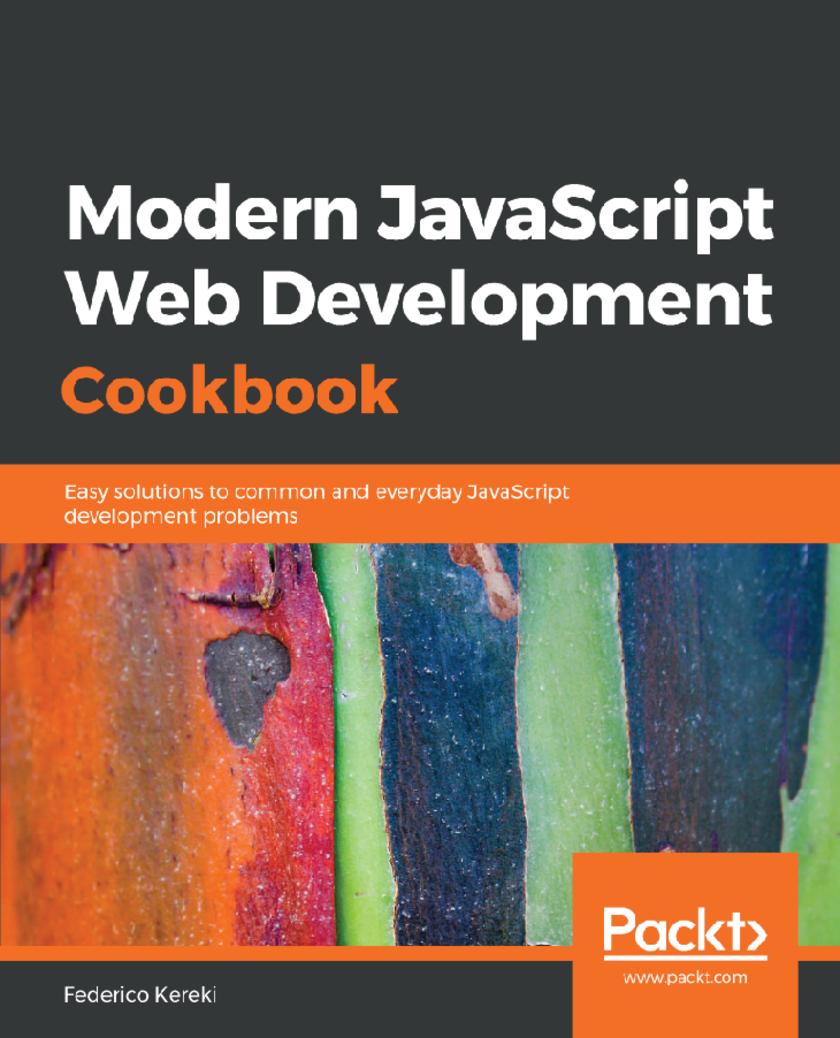
Modern JavaScript Web Development Cookbook
¥81.74
Over 90 recipes to help you write clean code, solve common JavaScript problems, and work on popular use cases like SPAs, microservices, native mobile development with Node, React, React Native and Electron. Key Features *Over 90 practical recipes to help you write clean and maintainable JavaScript codes with the latest ES8 *Leverage the power of leading web frameworks like Node and React to build modern web apps *Features comprehensive coverage of tools and techniques needed to create multi-platform apps with JavaScript Book Description JavaScript has evolved into a language that you can use on any platform. Modern JavaScript Web Development Cookbook is a perfect blend of solutions for traditional JavaScript development and modern areas that developers have lately been exploring with JavaScript. This comprehensive guide teaches you how to work with JavaScript on servers, browsers, mobile phones and desktops. You will start by exploring the new features of ES8. You will then move on to learning the use of ES8 on servers (with Node.js), with the objective of producing services and microservices and dealing with authentication and CORS. Once you get accustomed to ES8, you will learn to apply it to browsers using frameworks, such as React and Redux, which interact through Ajax with services. You will then understand the use of a modern framework to develop the UI. In addition to this, development for mobile devices with React Native will walk you through the benefits of creating native apps, both for Android and iOS. Finally, you’ll be able to apply your new-found knowledge of server-side and client-side tools to develop applications with Electron. What you will learn *Use the latest features of ES8 and learn new ways to code with JavaScript *Develop server-side services and microservices with Node.js *Learn to do unit testing and to debug your code *Build client-side web applications using React and Redux *Create native mobile applications for Android and iOS with React Native *Write desktop applications with Electron Who this book is for This book is for developers who want to explore the latest JavaScript features, frameworks, and tools for building complete mobile, desktop and web apps, including server and client-side code. You are expected to have working knowledge of JavaScript to get the most out of this book.
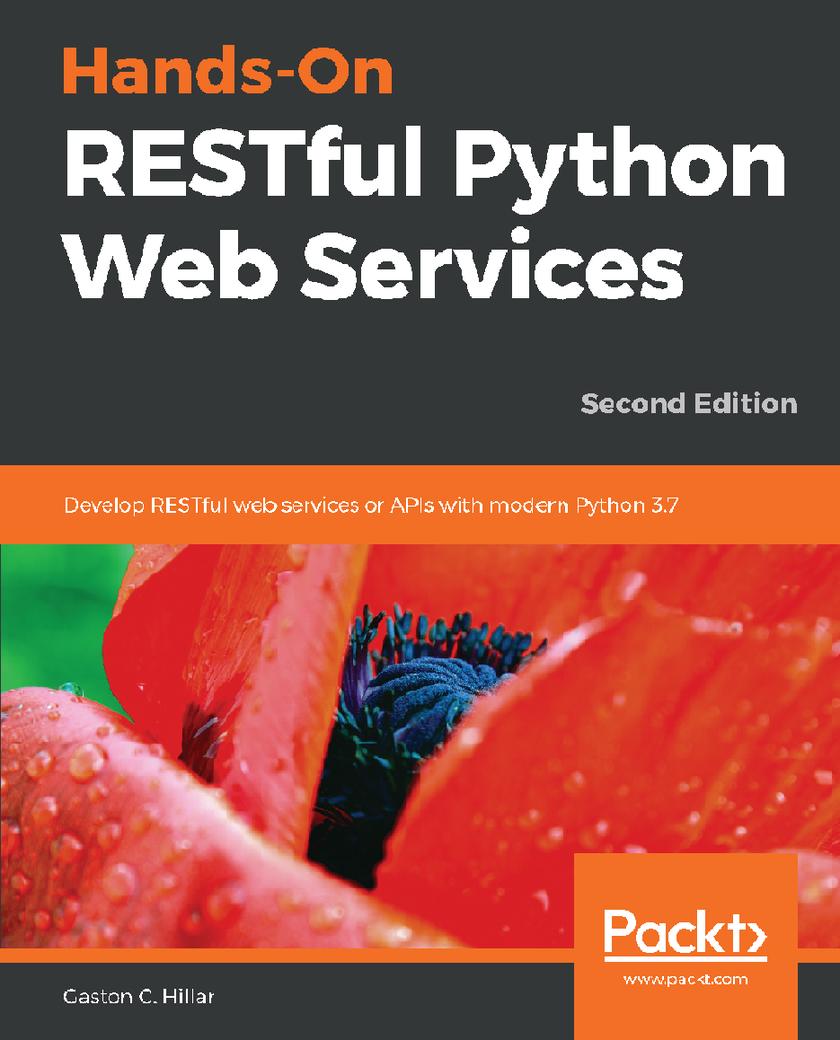
Hands-On RESTful Python Web Services
¥81.74
Explore the best tools and techniques to create lightweight, maintainable, and scalable Python web services Key Features *Combine Python with different data sources to build complex RESTful APIs from scratch *Configure and fine-tune your APIs using the best tools and techniques available *Use command-line and GUI tools to test CRUD operations performed by RESTful Web Services or APIs Book Description Python is the language of choice for millions of developers worldwide that builds great web services in RESTful architecture. This second edition of Hands-On RESTful Python Web Services will cover the best tools you can use to build engaging web services. This book shows you how to develop RESTful APIs using the most popular Python frameworks and all the necessary stacks with Python, combined with related libraries and tools. You’ll learn to incorporate all new features of Python 3.7, Flask 1.0.2, Django 2.1, Tornado 5.1, and also a new framework, Pyramid. As you advance through the chapters, you will get to grips with each of these frameworks to build various web services, and be shown use cases and best practices covering when to use a particular framework. You’ll then successfully develop RESTful APIs with all frameworks and understand how each framework processes HTTP requests and routes URLs. You’ll also discover best practices for validation, serialization, and deserialization. In the concluding chapters, you will take advantage of specific features available in certain frameworks such as integrated ORMs, built-in authorization and authentication, and work with asynchronous code. At the end of each framework, you will write tests for RESTful APIs and improve code coverage. By the end of the book, you will have gained a deep understanding of the stacks needed to build RESTful web services. What you will learn *Select the most appropriate framework based on requirements *Develop complex RESTful APIs from scratch using Python *Use requests handlers, URL patterns, serialization, and validations *Add authentication, authorization, and interaction with ORMs and databases *Debug, test, and improve RESTful APIs with four frameworks *Design RESTful APIs with frameworks and create automated tests Who this book is for This book is for web developers who have a working knowledge of Python and would like to build amazing web services by taking advantage of the various frameworks of Python. You should have some knowledge of RESTful APIs.
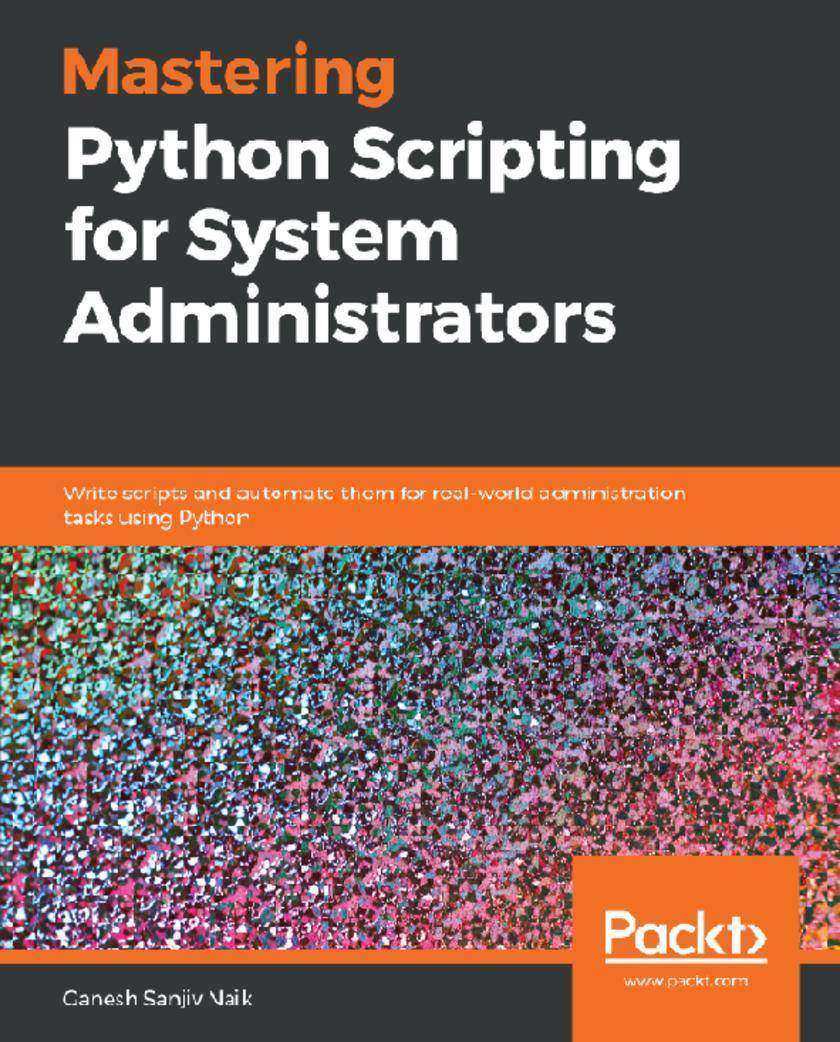
Mastering Python Scripting for System Administrators
¥81.74
Leverage the features and libraries of Python to administrate your environment efficiently. Key Features * Learn how to solve problems of system administrators and automate routine activities * Learn to handle regular expressions, network administration * Building GUI, web-scraping and database administration including data analytics Book Description Python has evolved over time and extended its features in relation to every possible IT operation. Python is simple to learn, yet has powerful libraries that can be used to build powerful Python scripts for solving real-world problems and automating administrators' routine activities. The objective of this book is to walk through a series of projects that will teach readers Python scripting with each project. This book will initially cover Python installation and quickly revise basic to advanced programming fundamentals. The book will then focus on the development process as a whole, from setup to planning to building different tools. It will include IT administrators' routine activities (text processing, regular expressions, file archiving, and encryption), network administration (socket programming, email handling, the remote controlling of devices using telnet/ssh, and protocols such as SNMP/DHCP), building graphical user interface, working with websites (Apache log file processing, SOAP and REST APIs communication, and web scraping), and database administration (MySQL and similar database data administration, data analytics, and reporting). By the end of this book, you will be able to use the latest features of Python and be able to build powerful tools that will solve challenging, real-world tasks What you will learn * Understand how to install Python and debug Python scripts * Understand and write scripts for automating testing and routine administrative activities * Understand how to write scripts for text processing, encryption, decryption, and archiving * Handle files, such as pdf, excel, csv, and txt files, and generate reports * Write scripts for remote network administration, including handling emails * Build interactive tools using a graphical user interface * Handle Apache log files, SOAP and REST APIs communication * Automate database administration and perform statistical analysis Who this book is for This book would be ideal for users with some basic understanding of Python programming and who are interested in scaling their programming skills to command line scripting and system administration. Prior knowledge of Python would be necessary.
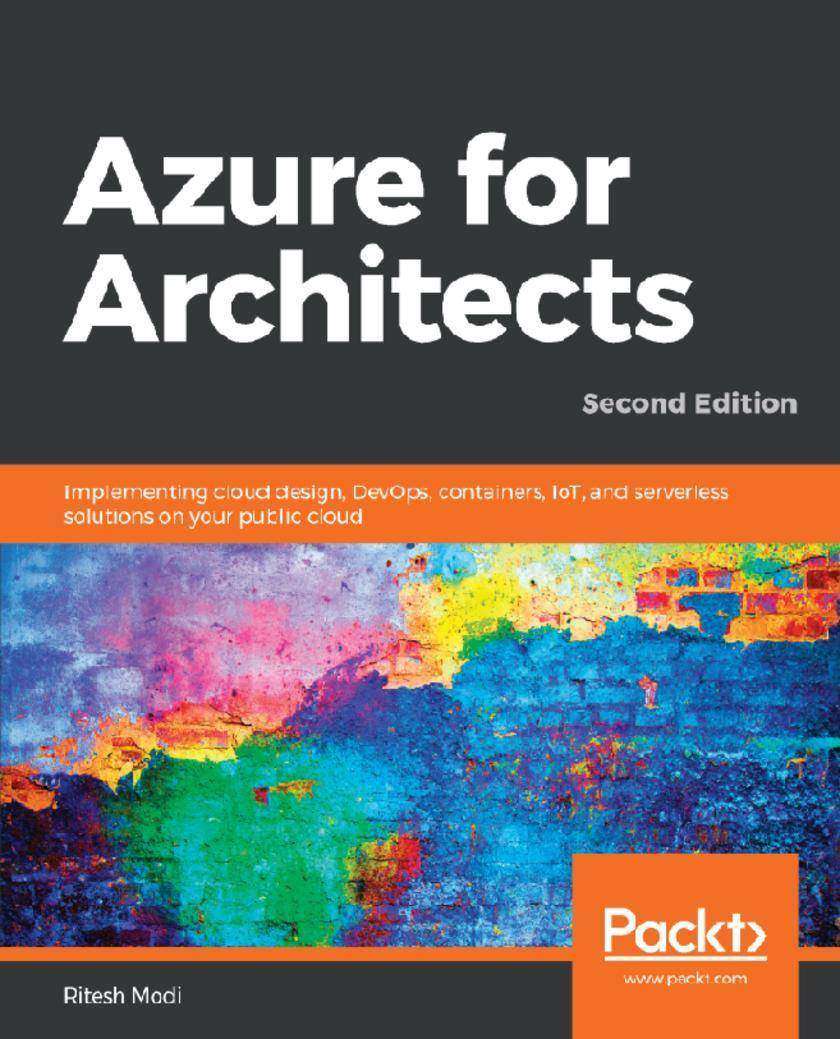
Azure for Architects
¥81.74
Create advanced data and integrated solutions using Azure Event Grid, functions, and containers Key Features * Get familiar with the different design patterns available in Microsoft Azure * Develop Azure cloud architecture and a pipeline management system * Get to know the security best practices for your Azure deployment Book Description Over the years, Azure cloud services have grown quickly, and the number of organizations adopting Azure for their cloud services is also gradually increasing. Leading industry giants are finding that Azure fulfills their extensive cloud requirements. Azure for Architects – Second Edition starts with an extensive introduction to major designing and architectural aspects available with Azure. These design patterns focus on different aspects of the cloud, such as high availability, security, and scalability. Gradually, we move on to other aspects, such as ARM template modular design and deployments. This is the age of microservices and serverless is the preferred implementation mechanism for them. This book covers the entire serverless stack available in Azure including Azure Event Grid, Azure Functions, and Azure Logic Apps. New and advance features like durable functions are discussed at length. A complete integration solution using these serverless technologies is also part of the book. A complete chapter discusses all possible options related to containers in Azure including Azure Kubernetes services, Azure Container Instances and Registry, and Web App for Containers. Data management and integration is an integral part of this book that discusses options for implementing OLTP solutions using Azure SQL, Big Data solutions using Azure Data factory and Data Lake Storage, eventing solutions using stream analytics, and Event Hubs. This book will provide insights into Azure governance features such as tagging, RBAC, cost management, and policies. By the end of this book, you will be able to develop a full-?edged Azure cloud solution that is Enterprise class and future-ready. What you will learn * Create an end-to-end integration solution using Azure Serverless Stack * Learn Big Data solutions and OLTP–based applications on Azure * Understand DevOps implementations using Azure DevOps * Architect solutions comprised of multiple resources in Azure * Develop modular ARM templates * Develop Governance on Azure using locks, RBAC, policies, tags and cost * Learn ways to build data solutions on Azure * Understand the various options related to containers including Azure Kubernetes Services Who this book is for If you are Cloud Architects, DevOps Engineers, or developers who want to learn key architectural aspects of the Azure Cloud platform, then this book is for you. Prior basic knowledge of the Azure Cloud platform is good to have.
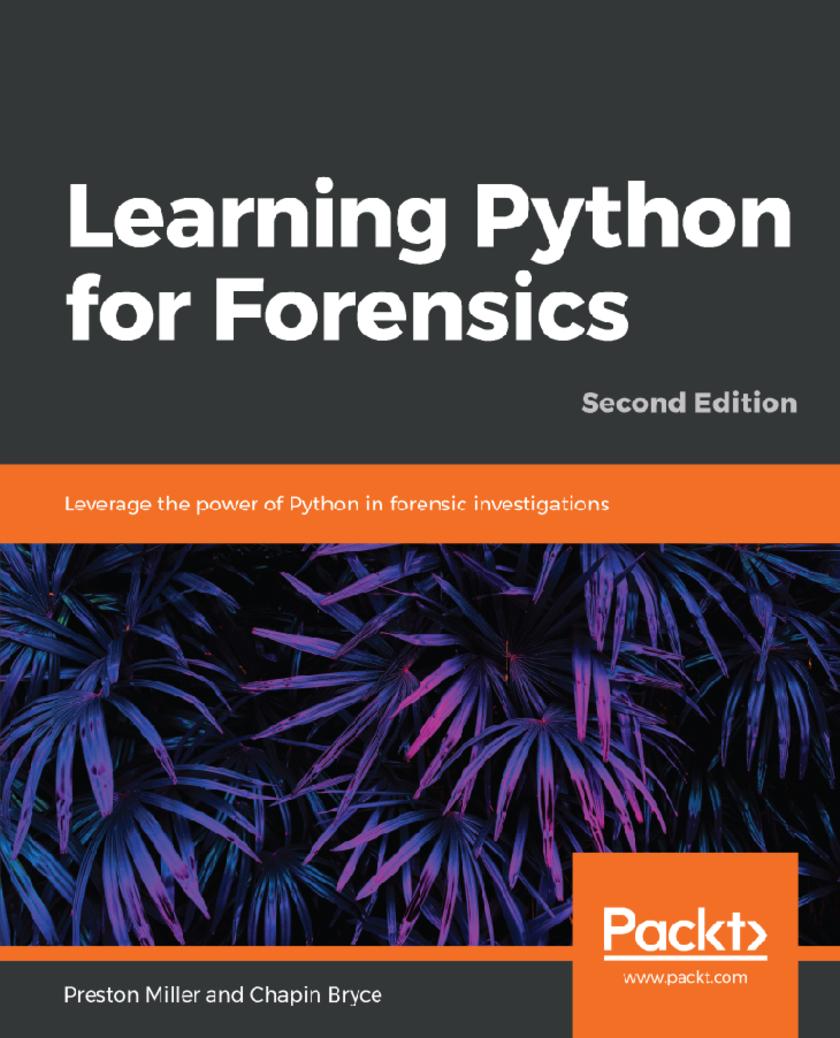
Learning Python for Forensics
¥81.74
Design, develop, and deploy innovative forensic solutions using Python Key Features * Discover how to develop Python scripts for effective digital forensic analysis * Master the skills of parsing complex data structures with Python libraries * Solve forensic challenges through the development of practical Python scripts Book Description Digital forensics plays an integral role in solving complex cybercrimes and helping organizations make sense of cybersecurity incidents. This second edition of Learning Python for Forensics illustrates how Python can be used to support these digital investigations and permits the examiner to automate the parsing of forensic artifacts to spend more time examining actionable data. The second edition of Learning Python for Forensics will illustrate how to develop Python scripts using an iterative design. Further, it demonstrates how to leverage the various built-in and community-sourced forensics scripts and libraries available for Python today. This book will help strengthen your analysis skills and efficiency as you creatively solve real-world problems through instruction-based tutorials. By the end of this book, you will build a collection of Python scripts capable of investigating an array of forensic artifacts and master the skills of extracting metadata and parsing complex data structures into actionable reports. Most importantly, you will have developed a foundation upon which to build as you continue to learn Python and enhance your efficacy as an investigator. What you will learn * Learn how to develop Python scripts to solve complex forensic problems * Build scripts using an iterative design * Design code to accommodate present and future hurdles * Leverage built-in and community-sourced libraries * Understand the best practices in forensic programming * Learn how to transform raw data into customized reports and visualizations * Create forensic frameworks to automate analysis of multiple forensic artifacts * Conduct effective and efficient investigations through programmatic processing Who this book is for If you are a forensics student, hobbyist, or professional seeking to increase your understanding in forensics through the use of a programming language, then Learning Python for Forensics is for you. You are not required to have previous experience in programming to learn and master the content within this book. This material, created by forensic professionals, was written with a unique perspective and understanding for examiners who wish to learn programming.
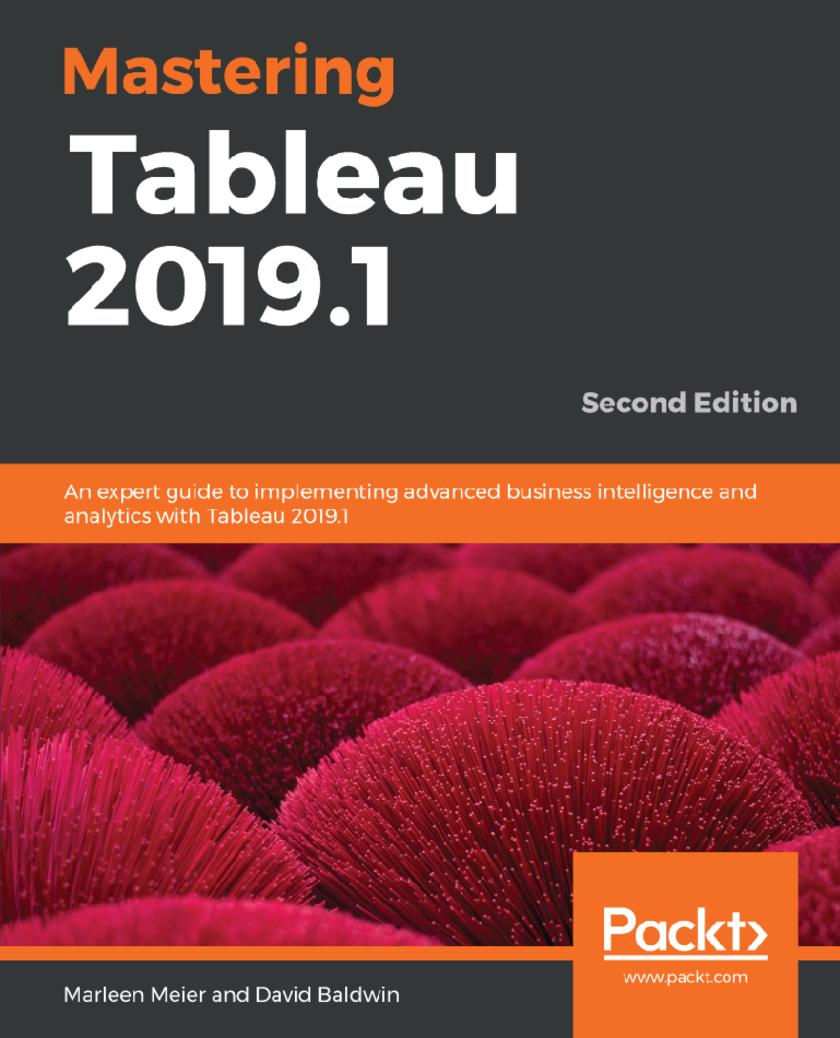
Mastering Tableau 2019.1
¥81.74
Build, design and improve advanced business intelligence solutions using Tableau’s latest features, including Tableau Prep, Tableau Hyper, and Tableau Server Key Features * Master new features in Tableau 2019.1 to solve real-world analytics challenges * Perform Geo-Spatial Analytics, Time Series Analysis, and self-service analytics using real-life examples * Build and publish dashboards and explore storytelling using Python and MATLAB integration support Book Description Tableau is one of the leading business intelligence (BI) tools used to solve BI and analytics challenges. With this book, you will master Tableau's features and offerings in various paradigms of the BI domain. This book is also the second edition of the popular Mastering Tableau series, with new features, examples, and updated code. The book covers essential Tableau concepts and its advanced functionalities. Using Tableau Hyper and Tableau Prep, you’ll be able to handle and prepare data easily. You’ll gear up to perform complex joins, spatial joins, union, and data blending tasks using practical examples. Following this, you’ll learn how to perform data densification to make displaying granular data easier. Next, you’ll explore expert-level examples to help you with advanced calculations, mapping, and visual design using various Tableau extensions. With the help of examples, you’ll also learn about improving dashboard performance, connecting Tableau Server, and understanding data visualizations. In the final chapters, you’ll cover advanced use cases such as Self-Service Analytics, Time Series Analytics, and Geo-Spatial Analytics, and learn to connect Tableau to R, Python, and MATLAB. By the end of this book, you’ll have mastered the advanced offerings of Tableau and be able to tackle common and not-so-common challenges faced in the BI domain. What you will learn * Get up to speed with various Tableau components * Master data preparation techniques using Tableau Prep * Discover how to use Tableau to create a PowerPoint-like presentation * Understand different Tableau visualization techniques and dashboard designs * Interact with the Tableau server to understand its architecture and functionalities * Study advanced visualizations and dashboard creation techniques * Brush up on powerful Self-Service Analytics, Time Series Analytics, and Geo-Spatial Analytics Who this book is for This book is designed for business analysts, BI professionals and data analysts who want to master Tableau to solve a range of data science and business intelligence problems. The book is ideal if you have a good understanding of Tableau and want to take your skills to the next level.
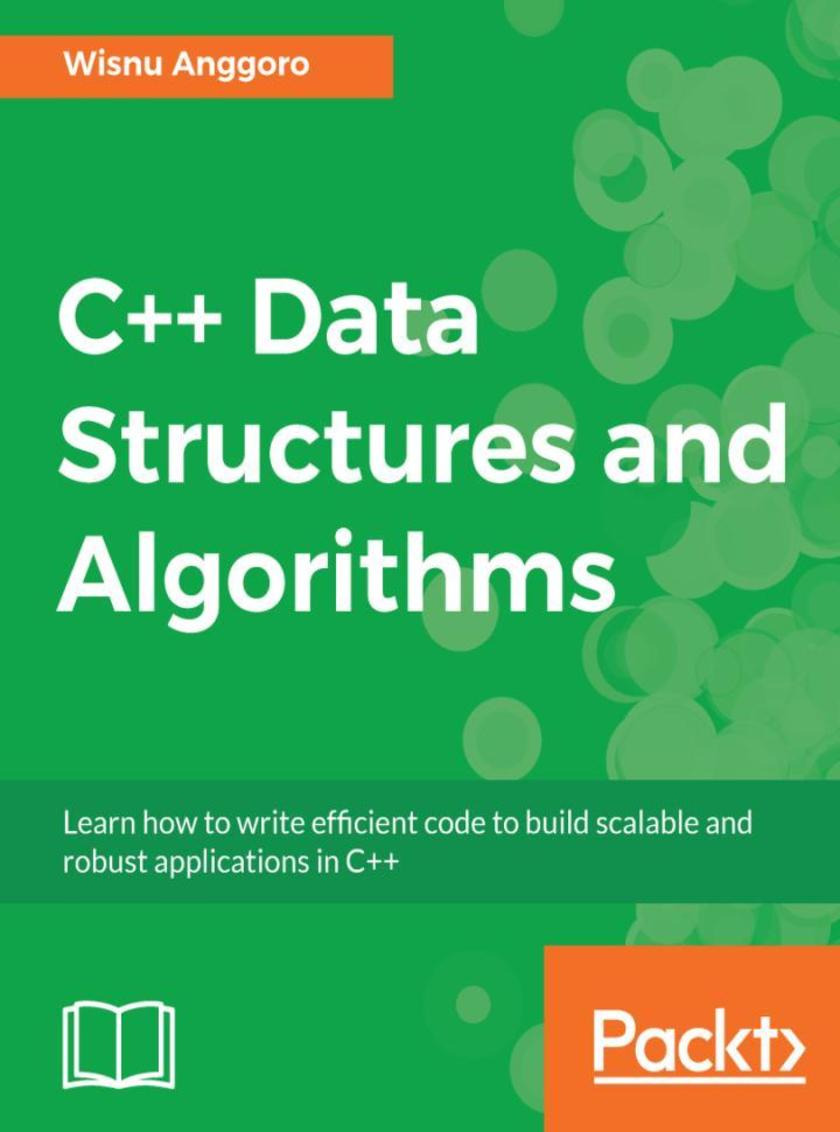
C++ Data Structures and Algorithms
¥81.74
Learn how to build efficient, secure and robust code in C++ by using data structures and algorithms - the building blocks of C++ About This Book ? Use data structures such as arrays, stacks, trees, lists, and graphs with real-world examples ? Learn the functional and reactive implementations of the traditional data structures ? Explore illustrations to present data structures and algorithms, as well as their analysis, in a clear, visual manner Who This Book Is For This book is for developers who would like to learn the Data Structures and Algorithms in C++. Basic C++ programming knowledge is expected. What You Will Learn ? Know how to use arrays and lists to get better results in complex scenarios ? Build enhanced applications by using hashtables, dictionaries, and sets ? Implement searching algorithms such as linear search, binary search, jump search, exponential search, and more ? Have a positive impact on the efficiency of applications with tree traversal ? Explore the design used in sorting algorithms like Heap sort, Quick sort, Merge sort and Radix sort ? Implement various common algorithms in string data types ? Find out how to design an algorithm for a specific task using the common algorithm paradigms In Detail C++ is a general-purpose programming language which has evolved over the years and is used to develop software for many different sectors. This book will be your companion as it takes you through implementing classic data structures and algorithms to help you get up and running as a confident C++ programmer. We begin with an introduction to C++ data structures and algorithms while also covering essential language constructs. Next, we will see how to store data using linked lists, arrays, stacks, and queues. Then, we will learn how to implement different sorting algorithms, such as quick sort and heap sort. Along with these, we will dive into searching algorithms such as linear search, binary search and more. Our next mission will be to attain high performance by implementing algorithms to string datatypes and implementing hash structures in algorithm design. We'll also analyze Brute Force algorithms, Greedy algorithms, and more. By the end of the book, you'll know how to build components that are easy to understand, debug, and use in different applications. Style and approach Readers will be taken through an indispensable list of data structures and algorithms so they can confidently begin coding in C++.
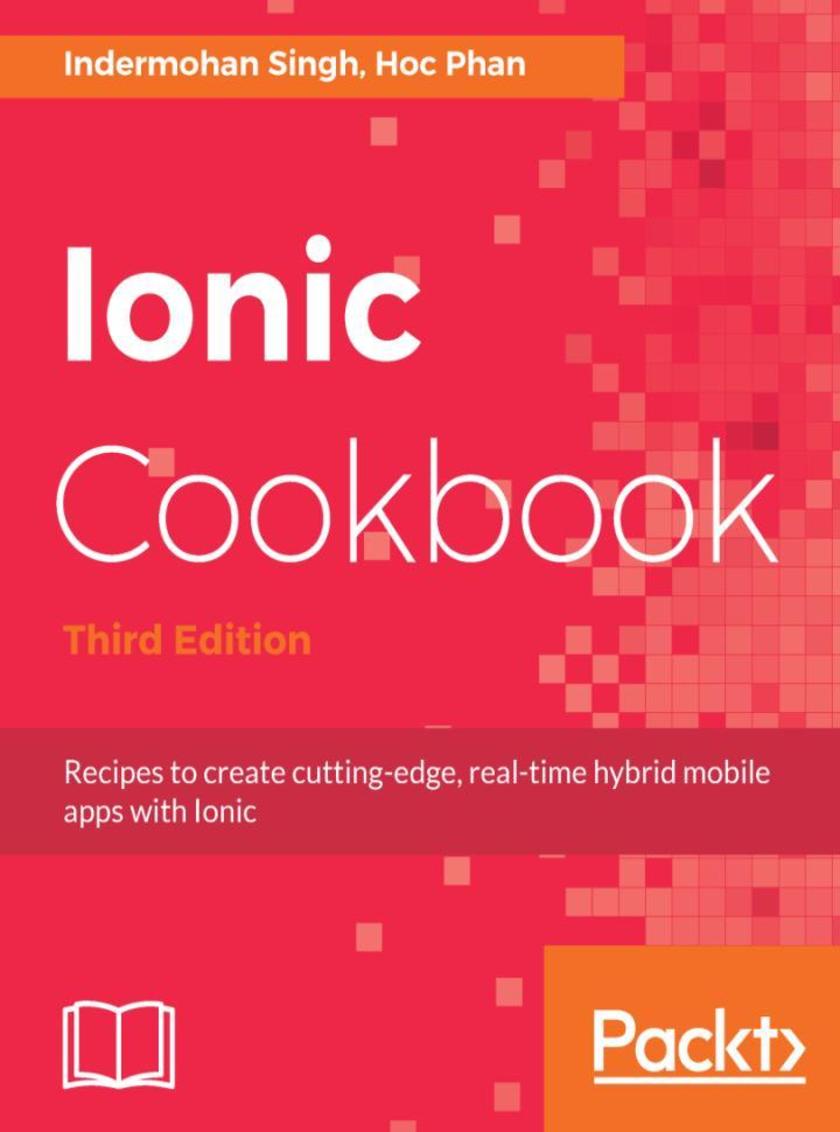
Ionic Cookbook
¥81.74
Solve all your Ionic-related issues through dedicated recipes that will help you get the best out of Ionic. Working with Ionic components to find out the best way to share data between them effectively. About This Book ? Leverage Ionic 3.9 and its exciting new features to create cutting-edge, real-time apps ? Work through simple recipes to address your problems directly and solve them effectively ? Get examples at each step to guide you on your learning curve with Angular Who This Book Is For This book targets JavaScript developers. No previous knowledge of Ionic is necessary, but prior knowledge of web development techniques would be useful. What You Will Learn ? Help readers to jump-start Ionic apps ? Explore essential features of Ionic with examples ? Learn how to use native device functionalities ? Make the best use of the REST API to handle back-end services ? Work with Cordova to support native functionalities on both iOS and Android. ? Master advanced topics in app development such as deep linking and lazy loading In Detail Ionic is the preferred choice for JavaScript developers to develop real-time hybrid applications. This book will get you started with Ionic 3.9 and help you create Angular 5 components that interact with templates. You will work with Ionic components and find out how to share data efficiently between them. You'll discover how to make the best use of the REST API to handle back-end services and then move on to animating your application to make it look pretty. You then learn to add in a local push notification in order to test the app. Then you'll work with Cordova to support native functionalities on both iOS and Android. From there, you'll get to grips with using the default themes for each platform and customizing your own. We then take you through the advanced Ionic features like lazy loading, deep linking, localizing ionic apps etc. Finally, you'll see how best to deploy your app to different platforms. This book will solve all your Ionic-related issues through dedicated recipes that will help you get the best out of Ionic. Style and approach The book's recipe-based approach will help you get the best out of Ionic 3.9
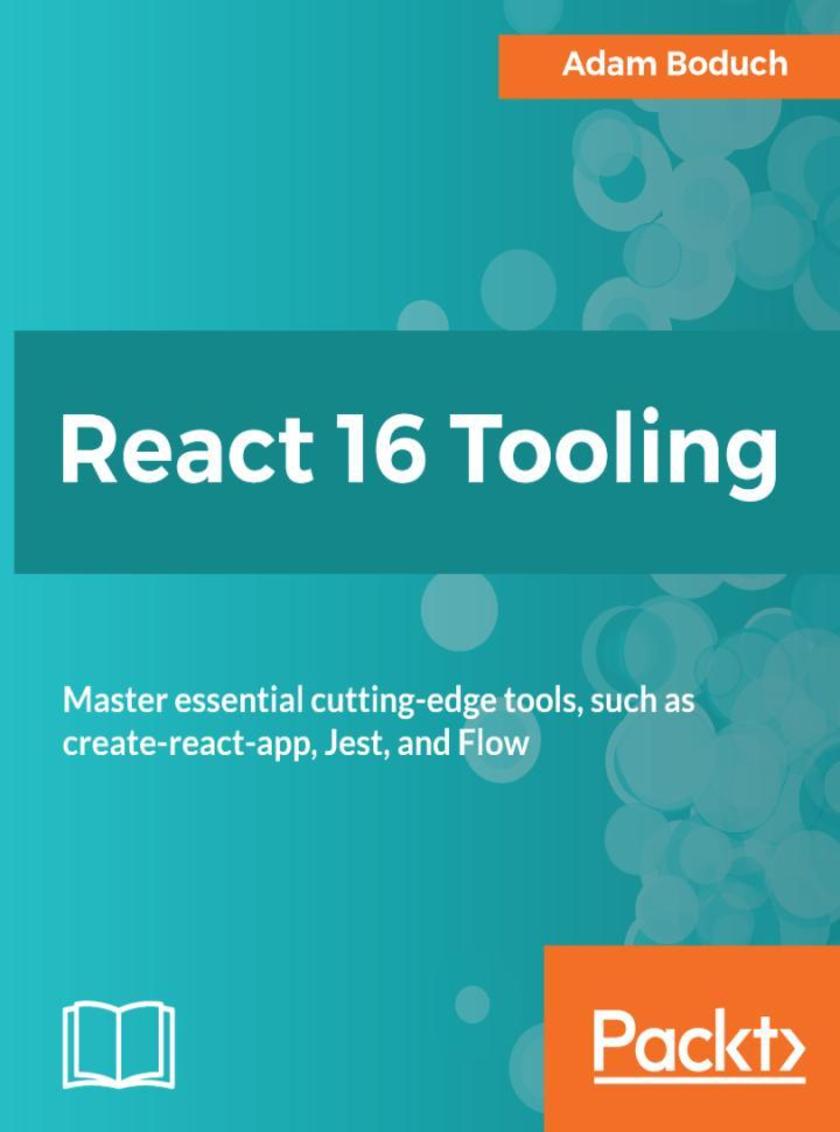
React 16 Tooling
¥81.74
React 16 Tooling covers the most important tools, utilities, and libraries that every React developer needs to know - in detail. About This Book ? Each chapter presents meta-development solutions to help React developers ? The tools used are presented in a practical, solution-oriented approach with no fluff ? The chapters are arranged in a logical order that mirrors a typical React development workflow, but you are free to tweak the approaches discussed to fit your own unique style Who This Book Is For This book is for React developers of any skill level who want to make their lives easier. It helps to have some familiarity with React, but if you are an experienced web developer looking at React, then this book will show you how to build a resilient toolset around you before you begin. What You Will Learn ? Bootstrap a React application using create-react-app ? Isolate React component development using Storybook ? Write effective unit tests for your React components using Jest ? Ensure that your component code is to standard using ESLint ? Use browser extensions and built-in component instrumentation to debug React applications ? Enable type safety in React components with Flowtype ? Deploy React applications inside a Docker container as part of a larger application stack In Detail React 16 Tooling covers the most important tools, utilities, and libraries that every React developer needs to know - in detail. As React has grown, the amazing toolset around it has also grown, adding features and enhancing the development workflow. Each of these essential tools is presented in a practical manner and in a logical order mirroring the development workflow. These tools will make your development life simpler and happier, enabling you to create better and more performant apps. Adam starts with a hand-picked selection of the best tools for the React 16 ecosystem. For starters, there's the create-react-app utility that's officially supported by the React team. Not only does this tool bootstrap your React project for you, it also provides a consistent and stable framework to build upon. The premise is that when you don't have to think about meta development work, more focus goes into the product itself. Other React tools follow this same approach to automating and improving your development life. Jest makes unit testing quicker. Flow makes catching errors easier. Docker containers make deployment in a stack simpler. Storybook makes developing components straightforward. ESLint makes writing standardized code faster. The React DevTools plugin makes debugging a cinch. React 16 Tooling clears away the barriers so you can focus on developing the good parts. In this book, we'll look at each of these powerful tools in detail, showing you how to build the perfect React ecosystem to develop your apps within. Style and approach This book covers React tools that help developers with the most relevant challenges they face today. Each chapter begins by defining the challenge faced by developers and why the tool is required, then shows how to fix the problem using React tooling.
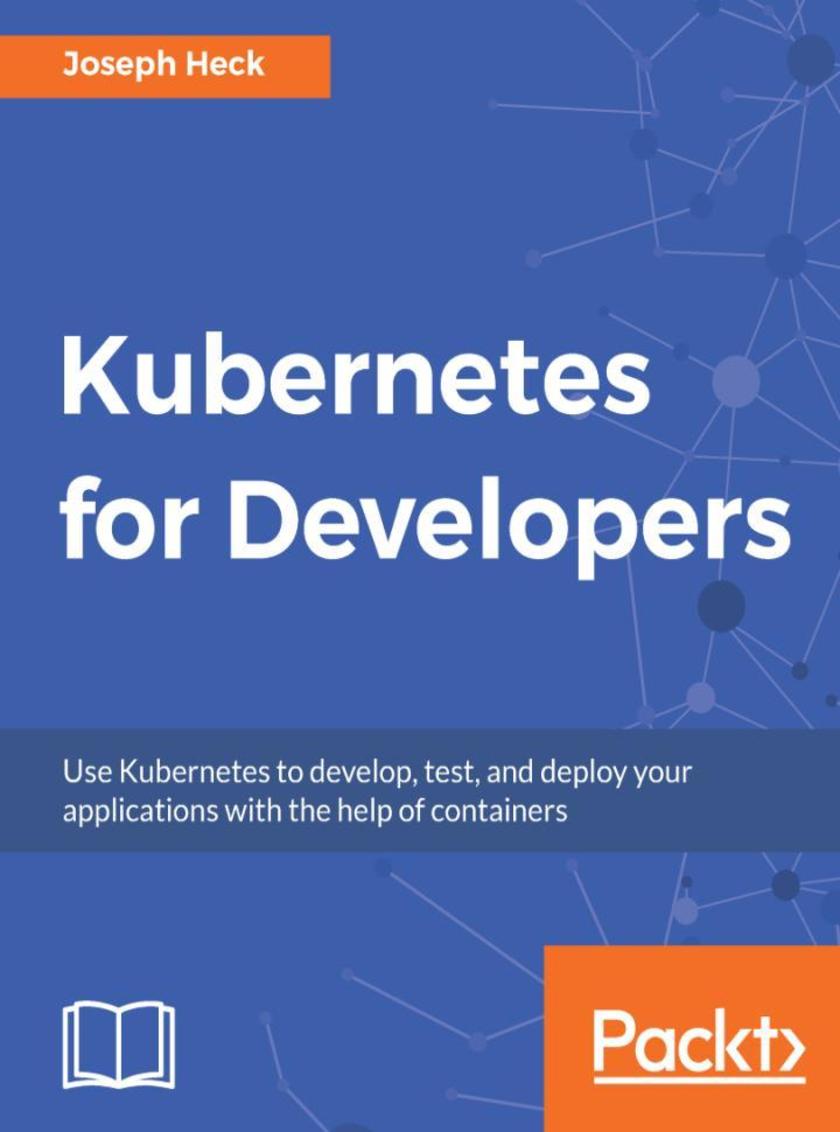
Kubernetes for Developers
¥81.74
A developer's field-guide to designing scalable services using Kubernetes About This Book ? Develop and run your software using containers within a Kubernetes environment ? Get hands-on experience of using Kubernetes with DevOps concepts such as continuous integration, benchmark testing, monitoring, and so on ? Pragmatic example-based approach showing how to use Kubernetes in the development process Who This Book Is For If you are a full-stack or back-end software developers interested, curious, or being asked to test as well as run the code you're creating, you can leverage Kubernetes to make that process simpler and consistent regardless of where you deploy. If you're looking for developer focused examples in NodeJS and Python for how to build, test, deploy, and run your code with Kubernetes, this is perfect for you. What You Will Learn ? Build your software into containers ? Deploy and debug software running in containers within Kubernetes ? Declare and add configuration through Kubernetes ? Define how your application fits together, using internal and external services ? Add feedback to your code to help Kubernetes manage your services ? Monitor and measure your services through integration testing and in production deployments In Detail Kubernetes is documented and typically approached from the perspective of someone running software that has already been built. Kubernetes may also be used to enhance the development process, enabling more consistent testing and analysis of code to help developers verify not only its correctness, but also its efficiency. This book introduces key Kubernetes concepts, coupled with examples of how to deploy and use them with a bit of Node.js and Python example code, so that you can quickly replicate and use that knowledge. You will begin by setting up Kubernetes to help you develop and package your code. We walk you through the setup and installation process before working with Kubernetes in the development environment. We then delve into concepts such as automating your build process, autonomic computing, debugging, and integration testing. This book covers all the concepts required for a developer to work with Kubernetes. By the end of this book, you will be in a position to use Kubernetes in development ecosystems. Style and approach This book will cover examples using NodeJS and Python that walk you through building containers, defining your deployments, deploying, debugging, testing, and generally interacting with your code running on Kubernetes. The examples are focused on common development needs, and include pragmatic advice and the explanations behind that advice.




 购物车
购物车 个人中心
个人中心



